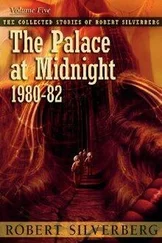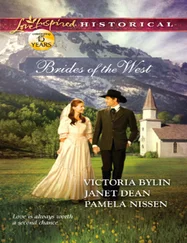Kermit Heartsong - Ukraine - ZBIG's Grand Chess Board & How The West Was Checkmated
Здесь есть возможность читать онлайн «Kermit Heartsong - Ukraine - ZBIG's Grand Chess Board & How The West Was Checkmated» весь текст электронной книги совершенно бесплатно (целиком полную версию без сокращений). В некоторых случаях можно слушать аудио, скачать через торрент в формате fb2 и присутствует краткое содержание. Год выпуска: 2015, Жанр: Политика, на английском языке. Описание произведения, (предисловие) а так же отзывы посетителей доступны на портале библиотеки ЛибКат.
- Название:Ukraine: ZBIG's Grand Chess Board & How The West Was Checkmated
- Автор:
- Жанр:
- Год:2015
- ISBN:нет данных
- Рейтинг книги:4 / 5. Голосов: 1
-
Избранное:Добавить в избранное
- Отзывы:
-
Ваша оценка:
- 80
- 1
- 2
- 3
- 4
- 5
Ukraine: ZBIG's Grand Chess Board & How The West Was Checkmated: краткое содержание, описание и аннотация
Предлагаем к чтению аннотацию, описание, краткое содержание или предисловие (зависит от того, что написал сам автор книги «Ukraine: ZBIG's Grand Chess Board & How The West Was Checkmated»). Если вы не нашли необходимую информацию о книге — напишите в комментариях, мы постараемся отыскать её.
Ukraine: ZBIG's Grand Chess Board & How The West Was Checkmated — читать онлайн бесплатно полную книгу (весь текст) целиком
Ниже представлен текст книги, разбитый по страницам. Система сохранения места последней прочитанной страницы, позволяет с удобством читать онлайн бесплатно книгу «Ukraine: ZBIG's Grand Chess Board & How The West Was Checkmated», без необходимости каждый раз заново искать на чём Вы остановились. Поставьте закладку, и сможете в любой момент перейти на страницу, на которой закончили чтение.
Интервал:
Закладка:
Meanwhile, Article 5 of the NATO Treaty was invoked to use NATO in the Global War on Terror and specifically in Afghanistan where it eventually took over military operations via control of the International Security Assistance Force (ISAF) in 2003. NATO was also involved in air operations during the invasion of Iraq that same year and participated in the occupation of the country from 2004 to 2011 under the “NATO Training Mission — Iraq” (Nazemroaya 2012).
All of the new NATO members and future members would eventually participate in the Iraq War in some capacity, prompting Donald Rumsfeld’s quip about “Old Europe” as opposed to a newly developing focus on the eastern nations (BBC 2003).
According to Mahdi Darius Nazemroaya, author of The Globalization of NATO , the Global War on Terrorism, viewed as an example of Samuel Huntington's “Clash of Civilizations” theory, enabled EU and NATO power projection into Eurasia's surrounding areas from two different fronts: from the western front in Europe and from the eastern/southern front via Japan, South Korea, the Arabian Peninsula, and Afghanistan — which are now littered with US military bases as well as ties to NATO and three branches of the global missile shield system.
By 2009, not only had NATO expansion greatly increased in terms of membership by twelve new nations in Central and Eastern Europe, its mandate had also expanded to include peacekeeping, international policing, and counter-terrorism activities — a far cry from its start as a defensive alliance to protect Western Europe from invasion by the long dead Soviet Union (Nazemroaya 2012).
Around this time, former UN Assistant Secretary General and UN Humanitarian Coordinator for Iraq Hans von Sponeck wrote an article published in a Swiss journal, in which he expressed deep concern for the direction NATO had been taking since the 1990s. He believed that the United Nations was at a crossroads, reflected in its relationship with NATO:
The world of the 192 UN member states has come to a fork in the road. One way leads to a world focused on the well-being of society, conflict resolution, and peace, i.e. to a life of dignity and human security with social and economic progress for all, wherever they may be — as stated in the United Nations Charter. Down the other road is where the nineteenth century “Great Game” for power will be further played out, a course which, in the twenty-first century, will become more extensive and dangerously more aggressive than ever. This road supposedly leads to democracy, but in truth it is all about power, control, and exploitation. (von Sponeck 2009)
In those two preceding decades, he argued, NATO had been attempting to usurp the UN's authority on the “monopoly of the use of force” by greatly expanding its objectives as well as its geographic reach by first trying to cast itself in the role of military arm of the UN, including invocation of what would evolve into the Responsibility to Protect doctrine in the Balkans. Then it went further, serving as an occupation force in Iraq (von Sponeck 2009).
In 1999, NATO acknowledged that it was moving beyond the mandate of a defensive alliance to include, “The protection of the vital resources' needs of its members. Besides the defense member states' borders, it set itself new purposes such as assured access to energy resources and the right to intervene in ‘movements of large numbers of persons’ and in conflicts far from the borders of NATO countries” (von Sponeck 2009).
In his article, von Sponeck asked how NATO's now broadened mission could be reconciled with international law, particularly with the UN charter. In this vein, he was particularly worried by an accord signed between the UN and NATO in September of 2008, which did not consult the Security Council. He believed that an accord between the two institutions undermined the UN's neutrality when three members of the Security Council are members of NATO which have a hostile posture toward the other two Security Council members and aims to assert power interests by use of force. Additionally, NATO is a “military alliance with nuclear weapons” and Article 2 of the UN Charter “requires that conflicts be resolved by peaceful means” (von Sponeck 2009).
In 2011, the troubling trends of NATO continued when the alliance blatantly breached the UN mandate to implement a no-fly zone in Libya (Nazemroaya 2012).
More recently, NATO, which now outspends the Russian military by eleven to one and has four times as many soldiers (Lekic 2014), has continued the insidious extension of its tentacles into still more areas of the world. In May of 2013, NATO entered into an agreement increasing military assistance to the African Union, including the Africa Standby Force. As a result of this agreement, NATO has a significant voice in determining where and how to use these forces.
According to geopolitical scientist Manlio Dinucci, NATO signed another security agreement in 2013 with Colombia, a likely precursor to membership. Dinucci (2014) describes the Pacific Rimpac 2014, which took place this past July, as “the world's largest maritime exercise, directed against China and Russia.” It involved 25,000 soldiers from 22 nations utilizing 55 ships and 200 warplanes, all under US command (Dinucci 2014).
The EU — NATO Dance
To understand the mechanisms that facilitate NATO expansion, the purpose behind it, and the underlying rivalries that could one day possibly undermine it, one must understand the role of the European Union, the dynamics within it, and its relationship to the United States.
Within the European Union (EU) there are two recognized axes of power and influence, which are also recognized axes within NATO. The first axis is the Anglo-American (also known as Atlanticist) partnership, which arose from the relationship between Britain and the United States after Britain's post-WWII decline which coincided with the US's ascent. This axis has more power in NATO with its military might supported by 48 percent of the world's total military expenditures. And although the US is not an actual member of the EU, Britain is largely recognized as its proxy across the pond. Moreover, the US invests significantly in the European Central Bank (ECB) as well as throughout the EU in general.
The second axis is the Franco-German axis, which was cemented between France and West Germany after WWII, partly to put a check on the first axis. But a rivalry between the continental powers and Britain had much longer historical roots as Britain had periodically shifted its alliance to whichever continental power seemed weaker to counter-balance the stronger one (Nazemroaya 2012). The unification of Germany after the Cold War strengthened the Franco-German axis, which has also historically tended to lean toward a Pan-Europeanism or even a Eurasian partnership. With Germany as the strongest economy in the EU, this axis has more influence and power within that entity (Nazemroaya 2012).
Since Title 10 of the Washington Treaty, which created NATO, requires a potential member to be European, it should be pointed out that Europe is not truly a continent unto itself but part of the Eurasian landmass that includes an area with a diversity of culture and politics, including the UK, France, Germany, Scandinavia, Greece, Italy, Russia, and arguably, Turkey. This is important when considering the definition of “European” as it relates to both the European Union's assumption that it solely represents some “European” interest and NATO's pushing the boundaries of that definition when it is advantageous to its expansion (Nazemroaya 2012).
Since the main post-Cold War thrust of expansion of both the EU and NATO has been aimed at the former Soviet satellite countries in Central and Eastern Europe, the goal has also been to prevent economic alliance with Russia. Indeed, Brzeziński stated in The Grand Chessboard that the “essential point regarding NATO expansion is that it is a process integrally connected with Europe’s own expansion.” He simultaneously makes it clear that Russia will not be considered for inclusion except perhaps at some point far into the future after they’ve been encircled and pass America’s definition of democracy and free market institutions — in other words, after they’ve accepted a subservient role (Brzeziński 1997).
Читать дальшеИнтервал:
Закладка:
Похожие книги на «Ukraine: ZBIG's Grand Chess Board & How The West Was Checkmated»
Представляем Вашему вниманию похожие книги на «Ukraine: ZBIG's Grand Chess Board & How The West Was Checkmated» списком для выбора. Мы отобрали схожую по названию и смыслу литературу в надежде предоставить читателям больше вариантов отыскать новые, интересные, ещё непрочитанные произведения.
Обсуждение, отзывы о книге «Ukraine: ZBIG's Grand Chess Board & How The West Was Checkmated» и просто собственные мнения читателей. Оставьте ваши комментарии, напишите, что Вы думаете о произведении, его смысле или главных героях. Укажите что конкретно понравилось, а что нет, и почему Вы так считаете.











